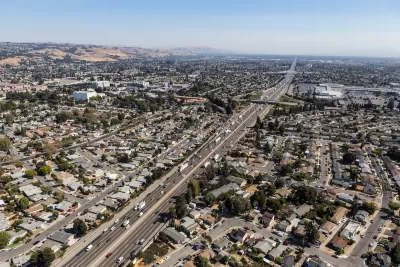One expert calls for collaboration between agencies in different fields to plan more thoughtfully for public health and equity.

In an interview with Smart Cities Dive’s Dan Zukowski, John Auerbach, former director of intergovernmental and strategic affairs at the Centers for Disease Control and Prevention, explains the link between transportation planning, public health, and equity.
According to Auerbach, “There’s a solid amount of evidence that shows that transportation has a significant impact on the health and well-being of the public. The social determinants of health really make a difference in what kind of housing people have and includes whether there are job opportunities, education opportunities.”
The placement of transportation infrastructure also impacts air quality. “As we look at the incidences of heart disease, asthma and other diseases, we know that the closer you are to a highway or an area where there’s a good deal of traffic, the more that you’re susceptible to a variety of different significant health issues,” Auerbach explains.
Looking to solutions, Auerbach says “An important way to change the equation is to build linkages between agencies that focus on health and transportation-related agencies at the federal, state and local levels.” Because transportation decisions impact public health, officials in both fields must work together. “Take the dollars that are available from a variety of sources to do planning that’s thoughtful for the entire region.”
FULL STORY: Transportation and public health ‘need to be working in collaboration with each other’

Montreal Mall to Become 6,000 Housing Units
Place Versailles will be transformed into a mixed-use complex over the next 25 years.

Planetizen Federal Action Tracker
A weekly monitor of how Trump’s orders and actions are impacting planners and planning in America.

DARTSpace Platform Streamlines Dallas TOD Application Process
The Dallas transit agency hopes a shorter permitting timeline will boost transit-oriented development around rail stations.

Interactive Map Reveals America's “Shade Deserts”
Launched by UCLA and American Forests to combat heat-related deaths, the tool maps the shade infrastructure for over 360 U.S. cities.

Bicycles and Books — In Sacramento, Libraries Now Offer Both
Adult library card holders can check out e-bikes and e-trikes for up to one week.

Colorado Landfills Emit as Much Pollution as 1M Cars
Landfills are the third-largest source of methane pollution in Colorado, after agriculture and fossil fuel extraction.
Urban Design for Planners 1: Software Tools
This six-course series explores essential urban design concepts using open source software and equips planners with the tools they need to participate fully in the urban design process.
Planning for Universal Design
Learn the tools for implementing Universal Design in planning regulations.
City of Mt Shasta
City of Camden Redevelopment Agency
City of Astoria
Transportation Research & Education Center (TREC) at Portland State University
US High Speed Rail Association
City of Camden Redevelopment Agency
Municipality of Princeton (NJ)




























